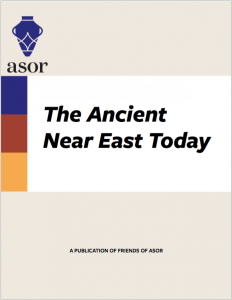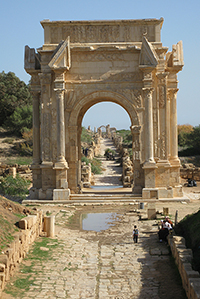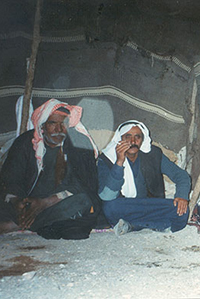

October 2013
Vol. 1, No. 7
Welcome to The Ancient Near East Today, No. 7! In this issue, Steven Collins asks whether Biblical Archaeology has gone too far in throwing out the Bible and proposes an important middle way. George Athas looks at some new Biblical inscriptions, and Norma Franklin reexamines the water system at Megiddo and suggests that it is not from the Iron Age.
This issue also highlights the connections between the past and the present. Susan Kane and Sam Carrier look hopefully at the state of archaeology in Libya after the revolution, while Alan Simmons and Mohammad Najjar review the promise and problems of ecotourism at a prehistoric site in Jordan. Finally, we are proud to have a piece by Oscar Muscarella on the fraudulent silver griffin artifact recently returned to Iran by the United States. All this, plus link to news, books, videos and more!
As always, please forward articles from The Ancient Near East Today to family and friends, post links to Facebook, and be in touch with the editor. Remember, being a Friend of ASOR is free!
Who Really Built the Water System at Megiddo?
By: Norma Franklin
Visitors to Megiddo thrill to the long descent into the famous water system, first climbing down the many steps that surround the gaping chasm dug deep into the tell and then the rock cut shaft followed by a long tunnel cut into the bedrock. But who actually built the water system?…[READ MORE]
Archaeology and Cultural Heritage in the New Libya
By: Susan Kane and Sam Carrier
The June 2013 destruction of an ancient necropolis near the UNESCO World Heritage site of Cyrene has drawn international attention to the precarious state of archaeology in Libya. Families living on nearby farms apparently have exerted their claim to ownership by clearing a large area of land containing the necropolis with heavy construction equipment. A section of land proposed for inclusion in the core of the World Heritage site has been entirely bulldozed…[READ MORE]
Has Archaeology Gone Overboard in Throwing Out the Bible?
By: Steven Collins
The relationship between archaeology and the Bible has been a much-debated topic over the last 25 years. The terms ‘minimalists’ and ‘maximalists’ are now as frequent as ‘exodus’ and ‘epigraphy’. There seems to be little or no middle ground. On the one hand, William Dever is—as he has stated on several occasions—flattered to have the death of biblical archaeology ascribed to him, although he is quick to point out that, in fact, he “only wrote the obituary.”…[READ MORE]
What’s New in Biblical Inscriptions?
By: George Athas
Summer is an exciting time, and not just because of the weather. It’s the time the archaeological fraternity dusts off its trowels and spades and sets to work digging the tels. Hopefully there are cohorts of grad students to do most of the dirty work. And hopefully, one of them will stumble upon an inscription or two: an ostracon with faint traces of inked letters, a bowl fragment with incised figures, or perhaps even a stone block with hard-chiselled text. Each new inscriptional find brings another fragment of the past into our own time. Piece by piece, our construction of Biblical history becomes more solid…[READ MORE]
An Unholy Quartet: Museum Trustees, Antiquity Dealers, Scientific Experts, and Government Agents
By: Oscar White Muscarella
In September 2013 the US returned a silver griffin to Iran as part of a diplomatic overture connected to Iranian president Rouhani’s appearance at the United Nations. But as retired Metropolitan Museum of Art curator Oscar White Muscarella showed in papers published in 2008 and 2012, the object is a fake and cannot be dated earlier than 1999. With permission of Dr. Muscarella, we are pleased to present an abridged version of his 2012 essay here…[READ MORE]
Joint Custody: An Archaeological Park at Neolithic Ghwair I, Jordan
By: Alan H. Simmons and Mohammad Najjar
Ecotourism is quickly becoming a means for the public to appreciate archaeological sites, even in remote regions. We are pleased to present this article by Alan Simmons and Mohammad Najjar abridged from the latest edition of Near Eastern Archaeology on a case study from Jordan…[READ MORE]






